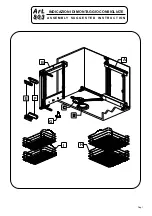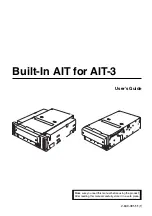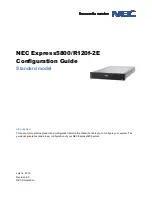
6. FireWire Questions & Answers
page 46
LaCie Big Disk Extreme with Triple Interface
User’s Manual
What Are The Ideal Uses For FireWire?
FireWire helped fuel a revolution for digital content creators, and was awarded a 2001 Primetime Emmy Engineering Award
by the Academy of Television Arts & Sciences for its contribution. Due to its high bandwidth and support of both isochronous
and asynchronous data delivery, FireWire has found a very successful place in both the computer and consumer electronics
industries. Whether connecting game consoles, personal video recorders, home stereo equipment, digital TVs, hard drives,
CD/DVD-RW drives, printers, scanners, tape drives or other digital hardware equipment, FireWire is well-suited to handle all
these various requirements.
With the advent of the new FireWire 800 standard, the revolution created by the original will only grow. For those working
with digital video, the new standard will enable new bandwidth-intensive applications, such as multiple-stream, uncom-
pressed, standard-definition video.
Will FireWire 400 Devices Run Faster When Connected To A FireWire 800 Port?
Unfortunately, this is not the case. In order to attain FireWire 800 speeds, both the device and port have to be FireWire 800
enabled. For instance, an external hard drive with a FireWire 800 9-pin connection will only reach FireWire 800 transfer
rates when it is connected to a FireWire 800 9-pin host bus adapter card via a properly certified FireWire 800 9-pin to 9-pin
beta cable.
When a FireWire 400 device is connected to a FireWire 800 port, the FireWire 400 device will only operate at the original
FireWire 400 speeds.
Will FireWire 800 Devices Work On FireWire 400 Ports And Vice Versa?
The new standard was designed to be backwards compatible, meaning that FireWire 800 devices will still operate via the
original FireWire 400 port. To connect a FireWire 800 device to a FireWire 400 port, a specific adapter cable must be used,
though. There are two types of FireWire 400 ports: 6-pin and 4-pin. For FireWire 800 devices to work, they must be connect-
ed by placing the 9-pin end of the FireWire cable into the FireWire 800 port of the device, and the opposite 6-pin or 4-pin
end into the FireWire 400 port.
The same holds true for FireWire 400 devices being connected to a FireWire 800 host port. The 4-pin or 6-pin end of the
FireWire cable must be connected to the FireWire 400 port of the device, and the 9-pin end must be connected to the
FireWire 800 port.
When FireWire 400 and FireWire 800 devices are mixed, all transfer rates revert to the original FireWire 400 speed.
What Do I Do If My Computer Does Not Have A FireWire Port?
Most computers manufactured today incorporate at least one FireWire port. If your computer does not have a native port, you
can install one by adding a PCI or PCMCIA host bus adapter card. Please contact your computer supply specialist for a spe-
cific card that will work with your system.
For more information about the FireWire interface, please visit:
www.lacie.com/technologies
















































